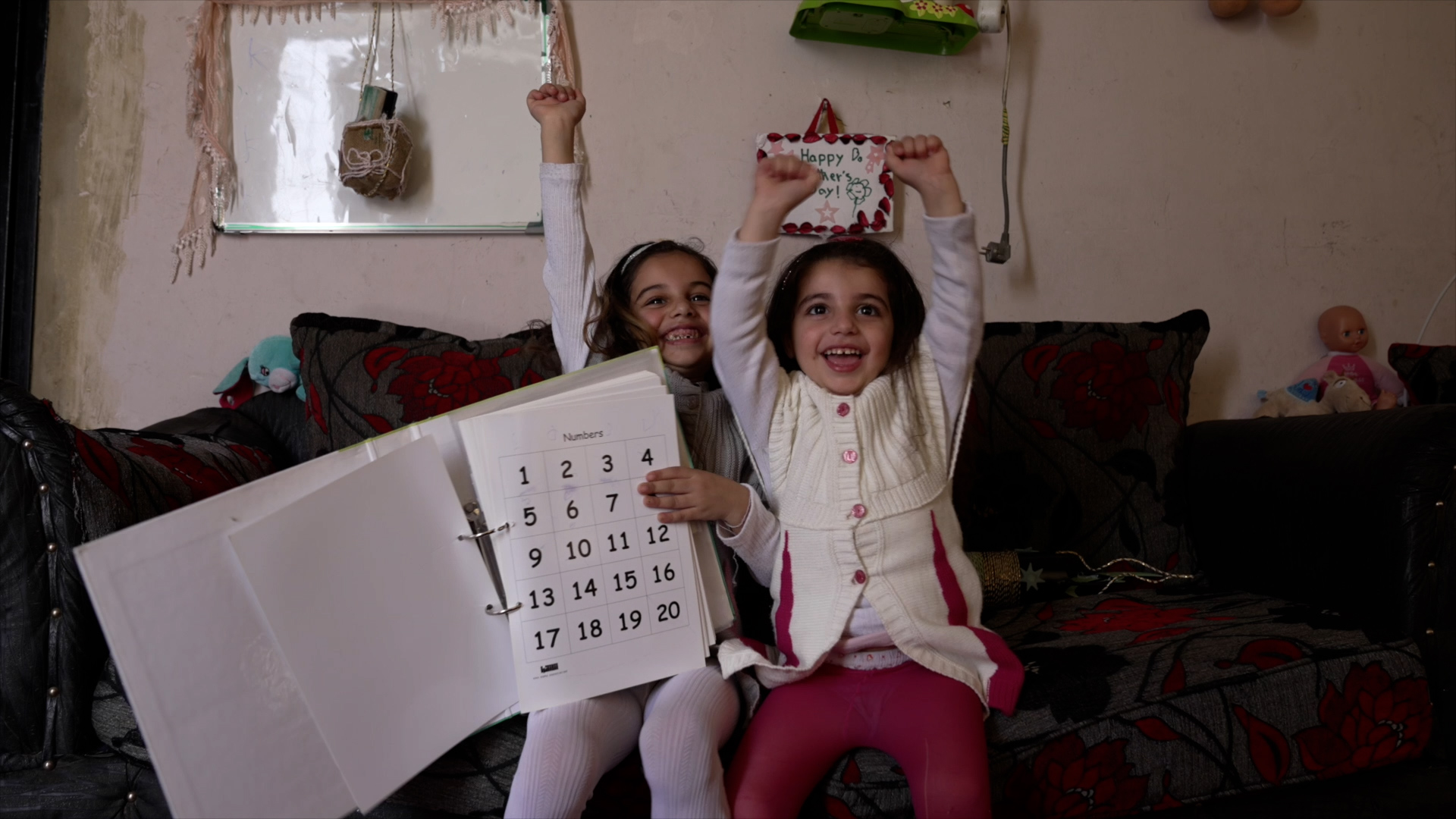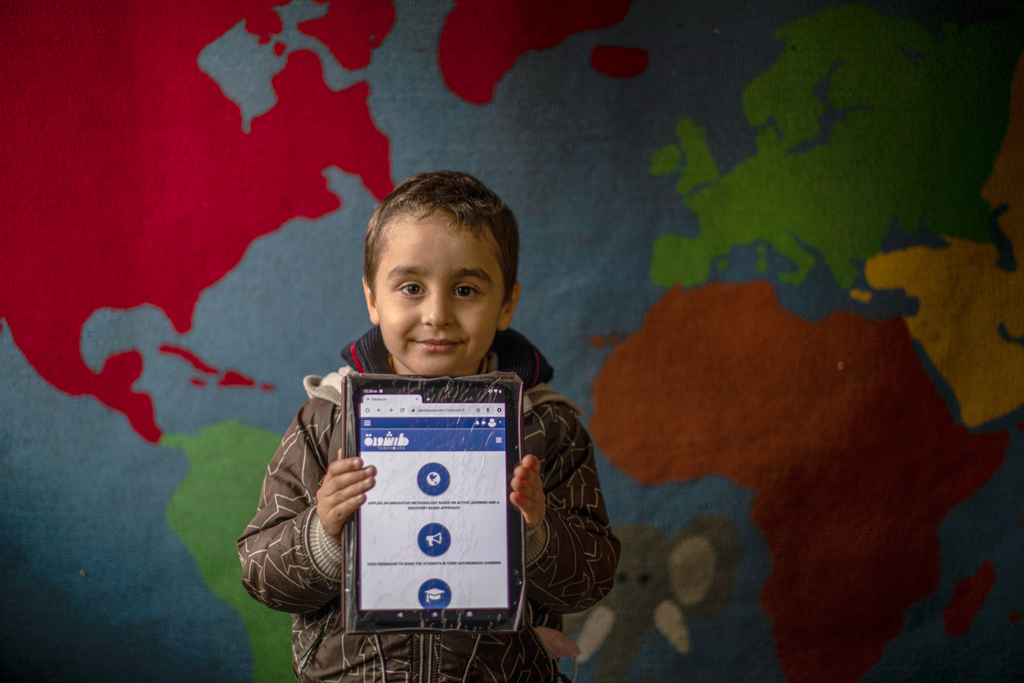
Protection is crucial for young children to survive the trauma of conflict
Children in conflicts, Early childhood development, Education in emergencies, Refugees and internally displaced people
With millions of under-fives living in war zones, safe spaces are needed to shield them from harm, fear and neglect.
Children always need protection – but never more so than during a conflict.
Some are orphaned, many abandoned, most are frightened and in distress.
They may be displaced, hungry, cold and left to survive on their own – which means they are at risk of violence, exploitation, disease or recruitment by armed groups.
Almost 90 million children under the age of seven have spent their whole lives in a war zone. More than 16 million babies were born in conflict zones in 2015 – an average of 43,835 per day – and today one in 10 children now live in conflict-affected areas, according to UNICEF.
With most refugees and displaced people being away from their home for more than 10 years, many children grow up only ever knowing temporary living, fear and uncertainty.
“War can be particularly devastating for children,” said Natalie Turgut, Child Rights Policy and Advocacy Adviser for War Child, which supports children acutely affected by conflict in countries including Iraq, Afghanistan and the Democratic Republic of Congo.
“They often find themselves separated from their families and at huge risk of physical harm, violence or sexual exploitation. They suffer physical and psychological damage that can last a lifetime.”
Keeping children – especially the youngest ones – safe from harm and fear is crucial. Protection is one of the five key things children under the age of five need if they are to develop to their full potential.
Theirworld’s #5for5 campaign is all about raising awareness of early childhood development and putting pressure on world leaders to deliver investment and services for the under-fives.
A child’s brain is 90% developed by the time he or she reaches that age – so the implications for children living through conflict are devastating.
The Safe Spaces report by Theirworld in 2016 showed the international community is neglecting millions of vulnerable babies and young children affected by conflicts and disasters.
But more than 60% of education aid appeals lack clear plans for early learning programmes or psychosocial support for children under five to access the safe spaces they need to learn, grow and recover.
Children in war-torn countries such as Yemen, Syria, Afghanistan and Central African Republic are suffering – and they need protection.
Natalie Turgut of War Child said: “Child protection is at the heart of what we do. We intervene quickly when conflicts start, to prevent abuse or neglect of children.”
The charity works with children, families, communities, legal services and local authorities before, during and after armed conflicts to develop more child-focused attitudes and systems.
She added: “It’s vital to create safe, child-friendly spaces for children to play in, and where we can assess what kind of other medical, psychological or social help they might need.”
UNICEF said last week that children had come under attack “on a shocking scale” in 2017.
“Children are being targeted and exposed to attacks and brutal violence in their homes, schools and playgrounds,” said Manuel Fontaine, UNICEF Director of Emergency Programmes. “As these attacks continue year after year, we cannot become numb. Such brutality cannot be the new normal.”
UNICEF said that in Afghanistan almost 700 children were killed in the first nine months of the year. In Myanmar, Rohingya children suffered and witnessed shocking and widespread violence as they were attacked and driven from their homes in Rakhine state.
In Yemen, nearly 1000 days of fighting have left at least 5000 children dead or injured, according to verified data, with actual numbers expected to be much higher. The fear levels of children in the war-torn country remain at critical.
Tamer Kirolos, Yemen Country Director for Save the Children, said in December: “The last few days have been unimaginably terrifying for children trapped under intense bombardment.
We create child-friendly spaces and run projects aimed at developing children’s sense of identity, confidence and self-expression within refugee camps. Natalie Turgut, Child Rights Policy and Advocacy Adviser for War Child
“We’re not able to get out in Sana’a to reach people with lifesaving support while the fighting is this intense.
“Millions of children are already acutely malnourished and sick because of the war and blockade in Yemen, and their families can’t go out to get them food and medical care.”
In conflicts like Syria and Yemen, even though most children will survive physically, the damage to their emotional wellbeing can be irreversible.
But there are programmes to tackle the psychosocial issues in the midst of the chaos of war and deprivation.
Turgut said: “We create child-friendly spaces and run projects aimed at developing children’s sense of identity, confidence and self-expression within refugee camps.
“We work with local community groups and families to identify and respond to potential dangers.”
World Vision’s Stand With Me campaign helps traumatised Syrian youngsters in child-friendly spaces. The charity said: “The immediate and long-term well-being of children remains a serious concern for humanitarian organisations.
Research on child-friendly spaces for refugee children in Ethiopia and Uganda found that children participating in such programmes showed more sustained and consistent mental, social and emotional wellbeing than those who did not.
It highlights the importance of these spaces in minimising long-term damage for children – especially the very young.
Joan Lombardi, First Deputy Assistant Secretary and Interagency Liaison for early childhood development at the United States Department of Health, said: “Early childhood programmes can be safe havens for young children and families and provide the oasis they need in the midst of chaos.
“While the most important step is for political leaders to get serious about ending war and other forms of violence, children who are suffering cannot wait for that day.
“Babies and young children living in crisis and violence and their caregivers need far greater support and investment. It is beyond urgency.”

More news

MyBestStart programme gives young girls the education they deserve
